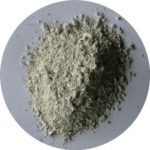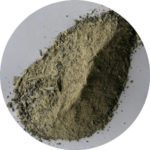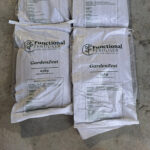The primary reason clover is included in permanent pasture mixes is its ability to fix nitrogen, an essential growth element.
Permanent pasture seed mixes used in the 1950’s and 60’s always contained clover, often two whites and a red, to ensure maximum performance. At that time the best grazed pastures grew between 16,000kg and 17,000kgDM/ha annually.
The reason for red clover to be included was because it had a longer stronger stem than whites allowing it to compete for sunlight in late spring and summer when high levels of pasture cover were recommended.
Many of the mixes contained six different grasses that included both annual and perennial ryes.
Different mixes were recommended for different geographical areas and classes of country; hence todays multi species mixes may be seen as a revisiting of earlier practises.
The benefits of clover however go a good deal further than just supplying nitrogen free of charge. Clover, even mature clover is more digestible and higher in energy than grass particularly over summer.
Grasses go to seed due to a combination of sunshine hours and soil temperatures. In the Waikato and Bay of Plenty it’s the first week in November when soil temperatures reach 20℃.
In Southland that may occur a little later with soil temperatures still below 20℃, however daylight hours are longer.
Seed formation is a natural survival process with synthetic N applications and short grazing intervals having limited beneficial effect.
Provided there’s sufficient soil moisture clovers thrive at the higher temperatures. Well manged pure clover swards are capable of 18,000kgDM/ha annually with most of that occurring over summer.
Being more digestible animals can eat more kgs of feed in their naturally allotted grazing times resulting in more rapid growth.
Those fattening lambs appreciate the value of clover dense swards, with lambs reaching target weight ahead of their competitors.
To grow young stock quickly a diet high in calcium is essential and clover delivers on that front as well with mature plants containing up to 2.5% calcium, three to four times the amount in grasses.
A dense clover dominated sward during summer also provides shade reducing moisture loss. Longer intervals between grazings have little impact on feed quality with mature clover easily harvested for hay.
Building a wedge of dense quality pasture is usually easily achieved by lengthening the grazing interval during November and December to a genuine 30 days by Christmas.
December, based on many years of pasture monitoring, is the most reliable growth month in the year. By extending grazing intervals to 30 days by month end means paddocks are grazed no more than three times prior to autumn rain arriving.
Because clover seeds prolifically, creating the soil conditions that favour its growth is all that is normally required with higher calcium inputs resulting in a steadily strengthening clover base.
Functional Fertiliser developed CalciZest, a lime-based product containing soft carbons inoculated with a proprietary mix of beneficial fungi and bacteria over twenty years ago.
Independent measuring showed a doubling, by weight, of the clover content of treated pasture compared to conventionally fertilised properties.
An application at any time will also improve physical soil structures allowing plant roots to grow deeper utilising moisture and nutrient from lower depths.
With oil prices steadily lifting the cost of synthetic N products will increase and with depressed prices for meat, milk, and other commodities now is the best possible time to shift to a lower-cost, sustainable, no risk soil fertility model.
For more information contact Peter on 0800 843 809




